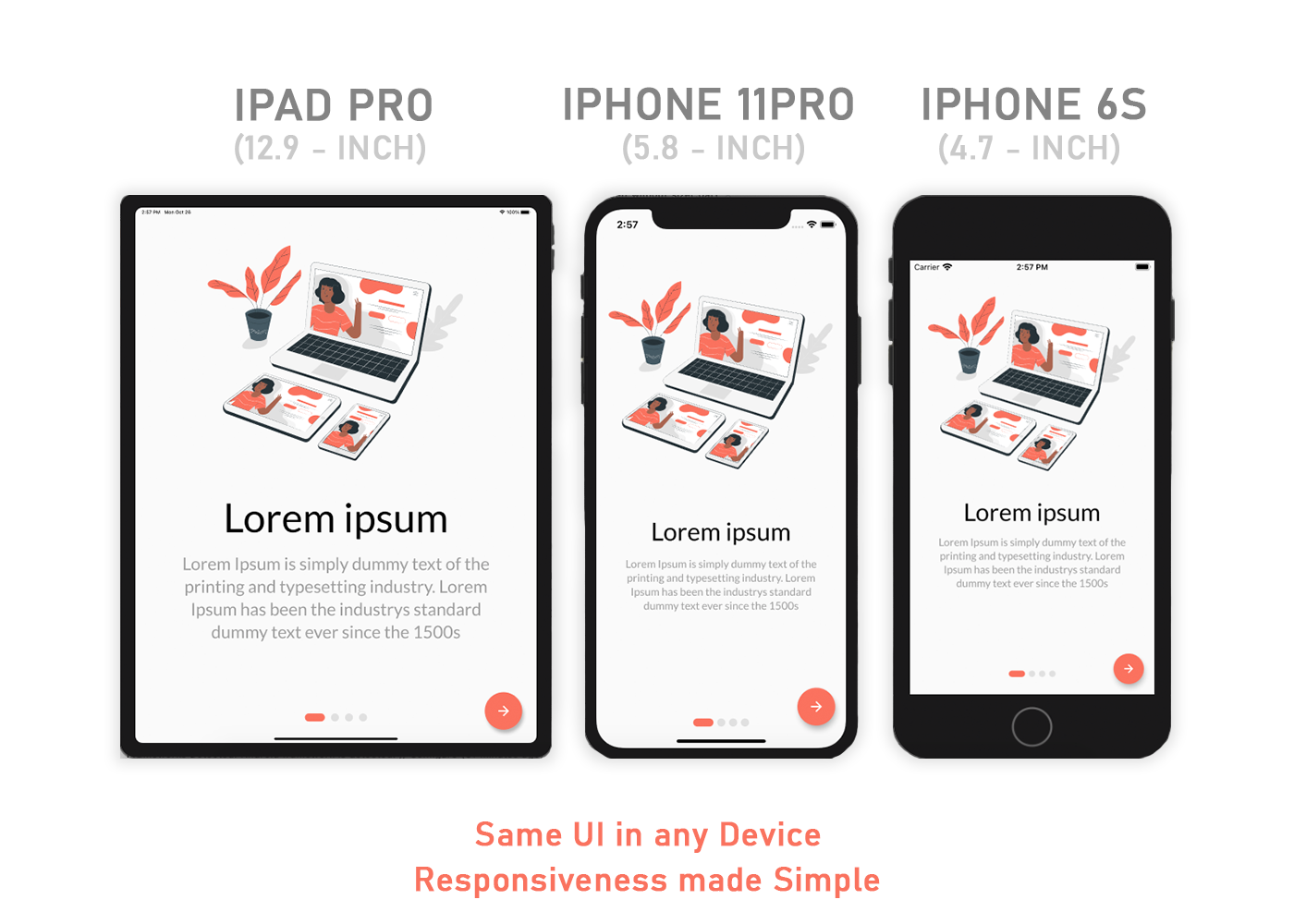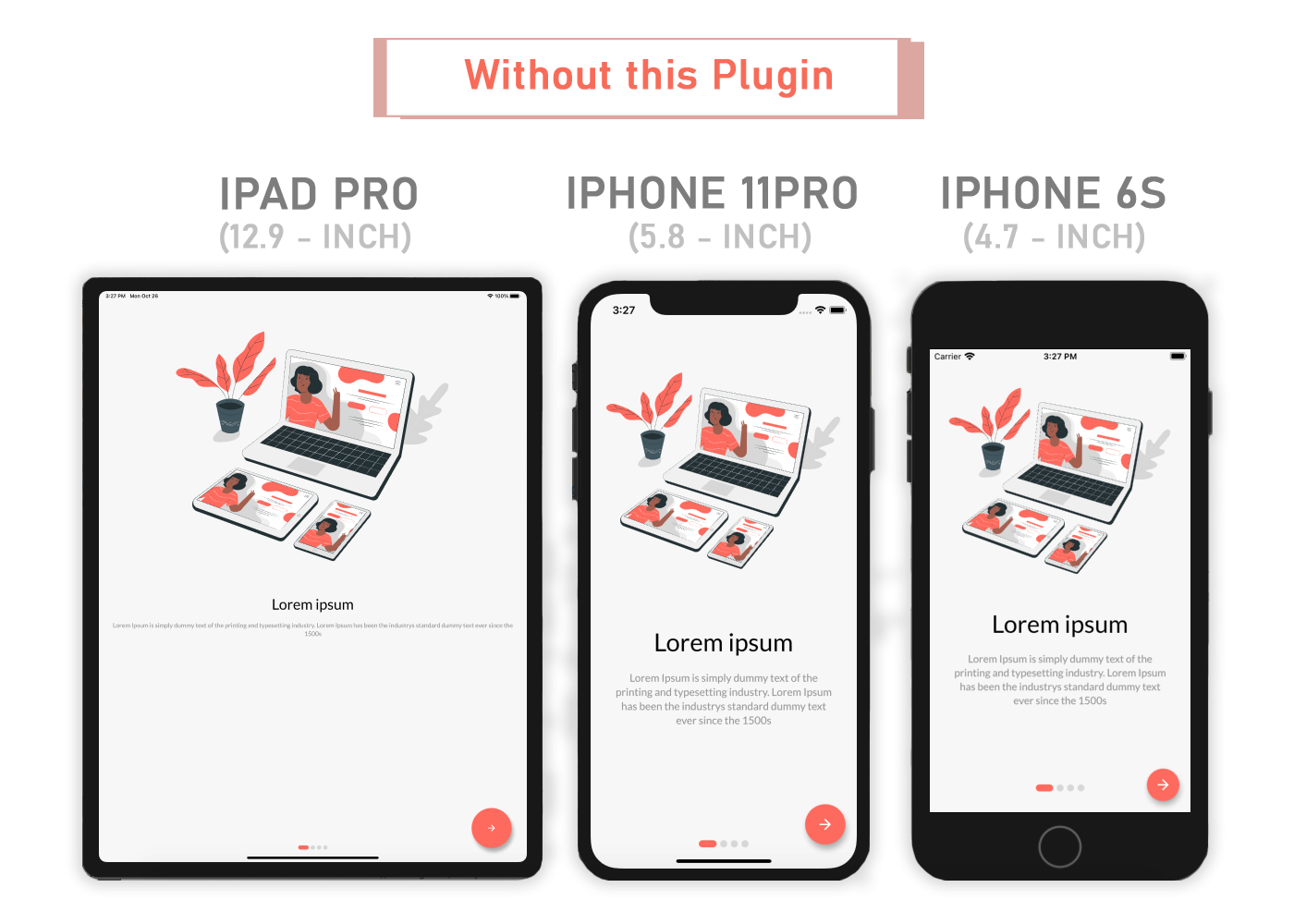This is a Fork of the sizer package.
A Flutter package for Easily make Flutter apps responsive. Automatically adapt UI to different screen sizes. Responsiveness made simple.
Add to pubspec.yaml.
dependencies:
...
appsize: ^1.1.0+2canvasWidth- The width of the figma canvas you're using, making.spwork as intended..h- Returns a calculated height based on the app size..w- Returns a calculated width based on the app size..dh- Returns a calculated height based on the device..dw- Returns a calculated width based on the device..sp- Returns a calculated "Sizeable Pixel" width based on the canvas width.AppSizeUtil.orientation- for screen orientation portrait or landscape.AppSizeUtil.deviceType- for device type mobile or tablet.
import 'package:appsize/appsize.dart';MaterialApp(
builder: (context, child) => AppSize(
builder: (context, orientation, deviceType) => child!,
),
),MaterialApp(
builder: (context, child) => AppSize.child(
child: child!,
),
);Because most phones vary in height and not in width, using the device height will make the UI change in size between devices. We recommend using it when adding spaces between widgets in a Column().
SizedBox(
height: 10.dh,
)If you want to support both portrait and landscape orientations, use .h and .w, their sizes update when rotated, width becomes height and height becomes width. Extensions .dh and .dw don't share this behavior, they remain the same.
Container(
width: 20.w, //It will take a 20% of app width
height: 30.h, //It will take a 30% of app height
)Container(
width: 20.dw, //It will take a 20% of screen width
height: 30.dh, //It will take a 30% of screen height
)We recommend to use .sp and .dw, even for heights when you want to make the app look the same in all phones.
Padding(
padding: EdgeInsets.symmetric(
vertical: 10.dw,
horizontal: 5.dw,
),
child: Text(
'AppSize',
style: TextStyle(
fontSize: 15.sp,
),
),
);If you want the same layout to look different in tablet and mobile, use the AppSizeUtil.deviceType method:
AppSizeUtil.deviceType == DeviceType.mobile
? Container( // Widget for Mobile
width: 100.w,
height: 20.5.h,
)
: Container( // Widget for Tablet
width: 100.w,
height: 12.5.h,
)Canvas Width
To make the num.sp extension work correctly you need to specify the width of the canvas you're using. In the case that the width of it changes in some parts of the app, you just need to use another AppSize with a new canvasWidth, it'll update all the num.sp down the tree to make use of the new width.
DeviceType
If you want to give support for both mobile and tablet then make separate widget for both like deviceType example.
You need to import appsize package in order to access num.h, num.w, num.dh, num.dw and num.sp.
If you have any suggestion for including a feature or if something doesn't work, feel free to open a Github issue for us to have a discussion on it.

